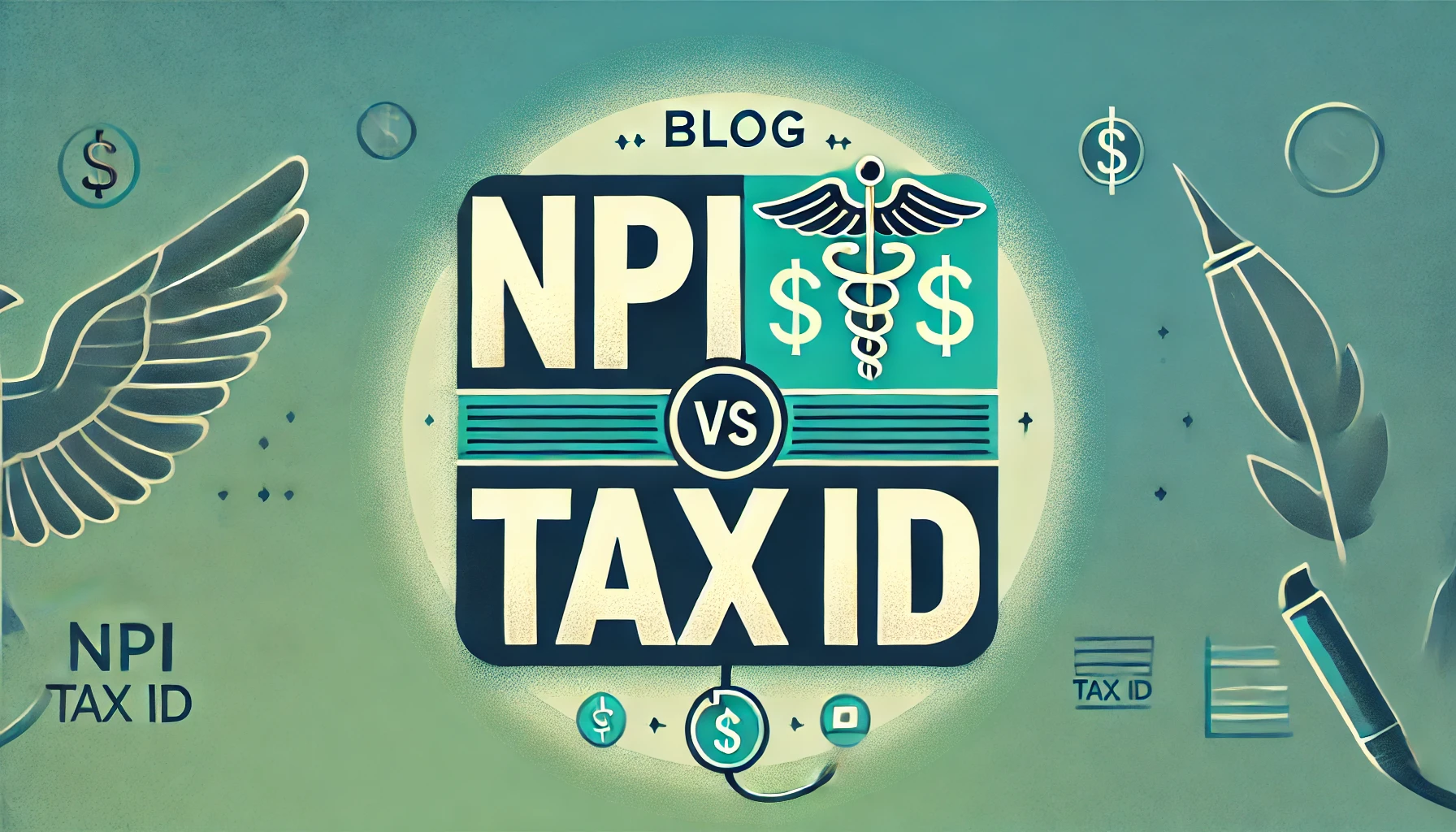Tax Credit Exchange: A Guide for Businesses and Insurers
This guide delves into the Tax Credit Exchange, a dynamic platform where businesses and insurers can trade transferable tax credits, enhancing cash flow and reducing tax liabilities. Learn about eligibility, the exchange process, and how brokers can facilitate these beneficial transactions.
Abhinil Kumar
Author

What is a Tax Credit Exchange?
The Tax Credit Exchange is a platform that enables the buying and selling of transferable tax credits. It provides a convenient marketplace where individuals and businesses can trade these credits to take advantage of tax benefits.
Types of tax credits that are eligible for exchange
There are several types of tax credits available to eligible taxpayers.
- Child Tax Credit: The Child Tax Credit allows eligible taxpayers to claim a credit for each qualifying child under the age of 17. This credit can be up to $2,000 per child and is partially refundable, meaning that even if the credit exceeds the tax owed, a portion may still be received as a refund.2
- Earned Income Tax Credit: The Earned Income Tax Credit (EITC) is designed to assist low-income working individuals and families. The credit amount varies based on income, filing status, and the number of qualifying children. It can result in a significant refund for eligible taxpayers.
- Education Tax Credits: There are two main education tax credits available - the American Opportunity Credit and the Lifetime Learning Credit. The American Opportunity Credit provides a credit of up to $2,500 for eligible expenses incurred during the first four years of post-secondary education. The Lifetime Learning Credit offers a credit of up to $2,000 for educational expenses incurred throughout an individual’s lifetime.
- Renewable Energy Tax Credits: To encourage the use of renewable energy sources, the government provides tax credits for eligible energy-efficient improvements made to homes, as well as for the installation of renewable energy systems such as solar panels or wind turbines. These credits can help offset the costs of these investments.
- Federal Investment Tax Credit (ITC): This tax credit is available for individuals or businesses that invest in renewable energy systems, such as solar panels or wind turbines. It allows for a percentage deduction of the total cost of the investment from federal taxes owed.
- State Historic Preservation Tax Credit: This credit is offered by some states to encourage the preservation and renovation of historic buildings. It provides a percentage deduction or credit on eligible expenses incurred during the restoration process.
- Low-Income Housing Tax Credit (LIHTC): This credit is aimed at developers who build or rehabilitate affordable rental housing units for low-income individuals or families. It offers a dollar-for-dollar reduction in federal income tax liability over 10 years.
- Carbon Capture Tax Credit: This credit is available for businesses that capture and store carbon dioxide emissions. It provides a per-ton tax credit for the amount of CO2 captured and stored.
Requirements for eligibility
For businesses and insurers looking to participate in a tax credit exchange, understanding and meeting the eligibility requirements is crucial. These criteria ensure that only qualified entities can benefit from exchanging tax credits, thereby promoting fairness and compliance within the financial ecosystem. Here’s a breakdown of the key eligibility requirements:
- Business Structure and Status: To be eligible, businesses must be registered and operate legally within the United States. This includes corporations, partnerships, sole proprietorships, and limited liability companies (LLCs) that adhere to state and federal laws. Additionally, insurers must be licensed and in good standing with the state insurance regulatory body.
- Tax Liability: Both businesses and insurers must have a federal and/or state tax liability against which the tax credits can be applied. This requirement ensures that the tax credit exchange serves the purpose of reducing tax burdens for participating entities.
- Specific Tax Credit Qualifications: Depending on the tax credit program, there may be specific qualifications that need to be met. For example, research and development tax credits may require businesses to demonstrate investment in innovation, while renewable energy credits might necessitate proof of investment in sustainable energy sources.
- Compliance with Financial Regulations: Entities must comply with all relevant financial reporting and taxation laws. This includes timely filing of tax returns, accurate reporting of income and expenses, and adherence to any sector-specific financial regulations that apply to the business or insurer.
- Documentation and Record-Keeping: To participate in a tax credit exchange, businesses and insurers must maintain comprehensive records of their financial transactions, tax credit eligibility, and any other relevant documentation. This information is crucial for verifying eligibility and facilitating the exchange process.
- Good Standing with Tax Authorities: Entities must not have any outstanding tax liabilities or be under investigation by tax authorities at the time of applying for a tax credit exchange. Being in good standing reinforces the entity’s credibility and reliability as a participant in the exchange.
Process of Exchange
In the realm of tax credit exchange, entities that earn tax credits through engaging in certain government-incentivized activities but cannot utilize them fully due to insufficient tax liability can transfer these credits to others who can. This exchange is facilitated by a market, sometimes through brokers or online platforms, where the price of tax credits is determined by supply and demand. The process involves a legal and regulatory framework to ensure the proper transfer and utilization of the credits, with both the seller and buyer adhering to specific requirements. Through this mechanism, tax credits achieve their intended purpose of encouraging activities beneficial to society or the environment, such as renewable energy projects or historic preservation. Entities with excess credits can monetize them, while those with high tax liabilities can reduce their taxes, thereby promoting economic efficiency and supporting policy objectives.
Steps involved in exchanging tax credits
Exchanging tax credits involves several key steps to ensure a smooth transfer of credits between buyers and sellers.
- Identifying Appropriate Credits: Begin by researching to identify the tax credits you wish to buy or sell. Explore online marketplaces and platforms such as Tax Credit Marketplace, SyndicateRoom, or the National Tax Credit Exchange, which specialize in tax credit exchanges. These platforms offer detailed information about various tax credits, including eligibility criteria and potential benefits. They serve as valuable resources for understanding the specific tax credits you’re interested in, providing a starting point for both buyers and sellers.
- Preparing for the Exchange: Once you’ve identified the appropriate credits, the next step is to prepare for the exchange. Gather all necessary documentation, such as proof of eligibility, the amount of credit, and supporting financial documents. Sellers should ensure their credits are properly documented and, if required, certified. Buyers should understand the specific criteria needed to utilize the credits. Consulting with a tax advisor or a broker specializing in tax credit exchanges can help navigate the documentation process and ensure compliance with legal standards.
- Utilizing a Brokerage Service or Exchange Platform: To facilitate the buying or selling of tax credits, consider using a brokerage service or an exchange platform that specializes in tax credit transactions. Services like Tax Equity Marketplace or the Online Incentives Exchange provide a platform for matching buyers with sellers, offering valuation for the tax credits, and ensuring transactions comply with legal and regulatory requirements. These platforms and services can expand your network of potential transaction partners and offer expertise in executing transfers efficiently.
- Overseeing the Transfer: With a suitable match identified, coordinate with the exchange platform or broker to finalize the transaction. This stage involves negotiating the price, completing necessary paperwork like purchase agreements and transfer forms, and ensuring the transfer adheres to all regulatory requirements. Diligently following these steps is crucial to avoid penalties or complications.
- Completing the Transaction: The last step is the formal exchange of tax credits between buyer and seller, facilitated by your chosen platform or broker. Clearly outline and agree upon payment terms and credit transfer details and finalize transaction specifics. Ensure both parties receive confirmation of the transfer and maintain records of the transaction for financial documentation.
Documentation required for the exchange
To facilitate a smooth and secure exchange process, certain documentation is crucially required. This documentation serves to verify the identities of the parties involved, establish proof of address, demonstrate ownership, and satisfy any legal or financial obligations.
First and foremost, identification documents such as passports, driver’s licenses, or national identification cards are mandatory. These documents are essential to confirm the identities of the individuals engaging in the exchange.
Secondly, proof of address is required to ascertain the residential or business location of the parties involved. This can be achieved through documents such as utility bills, bank statements, or any official correspondence showing the current address.
Moreover, proof of ownership is necessary to demonstrate that the assets being exchanged are indeed under the control and ownership of the parties involved. This can be established through property deeds, vehicle registration certificates, or any other relevant legal documents.
To submit and verify the documentation, the exchange process typically involves scanning or uploading these documents in a secure manner. This could be through a secure online portal or via encrypted email attachments to ensure the confidentiality and integrity of the information.

Tax Credit Exchange: A complete guide
Role of brokers and intermediaries in the market
Brokers and intermediaries play a crucial role in the market by facilitating the transfer of tax credits between buyers and sellers. These individuals or companies act as middlemen, connecting buyers and sellers and ensuring a smooth transaction process.
One way brokers and intermediaries facilitate the transfer of tax credits is through benefit exchanges. These exchanges, such as ADP’s National Benefit Exchange, utilize their proprietary databases to connect potential buyers with sellers of tax credits. These databases contain comprehensive information about available tax credits, enabling buyers to identify and select the most suitable credits for their needs.
In addition to connecting buyers and sellers, brokers and intermediaries also assist with the necessary paperwork for transferring tax credits. This includes verifying the legitimacy and eligibility of the credits, preparing the transfer documentation, and ensuring compliance with all relevant regulations. By taking care of the administrative aspects of the transfer, brokers and intermediaries help streamline the process and save both buyers and sellers valuable time and effort.
Conclusion
The advent of the tax credit exchange market has revolutionized the way business entities and individuals perceive and utilize tax incentives. By enabling the credit in exchange for liquidity or other financial benefits, this platform offers a unique opportunity to maximize the economic benefits derived from Transferable Tax Credits. It’s a marketplace where every party in exchange, from small businesses to large corporations and insurance companies, can find value, either by selling excess credits to improve cash flow or by buying credits to reduce tax liabilities.
As significant participants in this exchange, insurance companies underscore the market’s robustness, providing a layer of trust and financial stability. Their involvement highlights the exchange’s importance not just as a financial tool but also as a catalyst for achieving broader economic benefits, such as stimulating investments in clean energy and historic preservation.
As we look toward the future, the tax credit exchange market promises to continue its role as a pivotal platform for business entities looking to optimize their tax strategies. It stands as a testament to the innovative ways in which the market can support sustainable economic growth while offering tangible benefits for every party in exchange. Whether for small businesses seeking to enhance their growth or for insurance companies aiming to leverage their investments, the tax credit exchange market remains a critical mechanism for realizing the full potential of Transferable Tax Credits.


